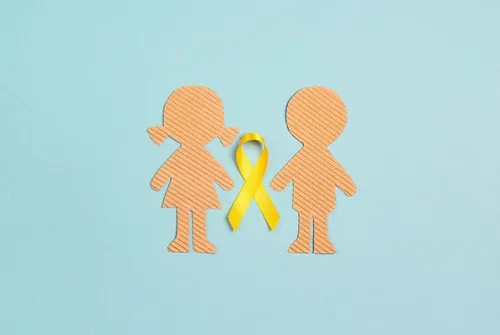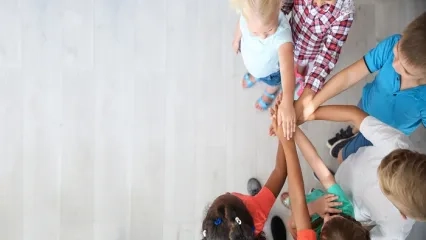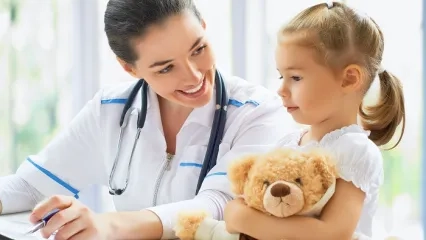Alo Yeditepe
Alo Yeditepe
9 Most Common Types of Cancer in Children
Since children are not little copies of adults, their diseases also experience the difference. The disease can progress in different ways, from the incidence to the symptoms. Reminding that the most important feature that distinguishes childhood cancers from adult cancers is their incidence, Pediatric Oncology Specialist Dr. Asım Yörük said that while acute leukemia and lymphoma brain tumors are the most common cancers in children, the frequency of these cancer types is less in adults.
However, neuroblastoma, which is considered a childhood cancer, is very rare after the age of 10, and retinoblastoma is very rare after the age of 20, while carcinomas, which constitute 75 percent of adult cancers, occur very rarely in children. Yeditepe University Koşuyolu Hospital Pediatric Oncology Specialist Dr. Asım Yörük, who made important statements on the occasion of Childhood Cancer Awareness Month, talked about the most common types of cancer in children and their symptoms…
The Most Common Type of Cancer is Leukemia
Leukemia is one of the most common cancers in children, with a 31% incidence rate. According to the information given by Specialist Dr. Asım Yörük, radiation, chemicals such as benzene, some viruses, and some genetic diseases are shown as the causes of this type of cancer originating from bone marrow and blood. Listing the symptoms of leukemia as fatigue, dizziness, shortness of breath, pale color, persistent or recurrent infections, bruises on the skin, nosebleeds, and gingival bleeding, Specialist Dr. Asım Yörük also reminded that general symptoms such as loss of appetite, weight loss, night sweats, and fever can be observed. Chemotherapy is the first-line treatment for leukemia in children, and in some cases, radiotherapy can be used in addition to chemotherapy. In addition, stem cell transplantation can be included in the treatment of high-risk, treatment-resistant, or recurrent leukemias.
Treatment for Brain Tumors Varies by Type
Brain and central nervous system tumors are the second most common type of cancer in children. Specialist Dr. Asım Yörük, who stated that the treatment of brain tumors, which is seen with a frequency of 26 percent, is different because there are many different types, listed the symptoms of brain tumors as follows: “Since the brain controls learning, sense (hearing, sight, smell, taste, touch), emotion, movement, organs, and vessels, many different symptoms may occur in brain tumors. There are symptoms such as headache, nausea, vomiting, blurred or double vision, fixed gaze, repetitive automatic movements, seizures, dizziness, balance disorder, difficulty in walking, and difficulty in holding objects.”
After the Diagnosis of Lymphoma, Immediate Treatment is Essential
Stating that the symptoms of lymphoma may vary according to the location of the onset of the disease, Specialist Dr. Asım Yörük pointed out that it is necessary to pay attention to symptoms such as weight loss, fever, sweating, fatigue, weakness, swelling in the lymph nodes in the neck, armpit, and groin. Hodgkin lymphoma accounts for 3 percent of cancers seen in children, and non-Hodgkin lymphoma accounts for 5 percent, and since it will progress rapidly, it is important to start treatment as soon as the diagnosis is made.
Pain or Swelling in the Arm or Leg is the First Sign of Soft Tissue Sarcomas
Soft tissue sarcomas, which can be seen anywhere in the body, account for 7 percent of cancers in children. It may begin in the head, neck, abdomen, pelvis, arm, or leg and may be accompanied by pain, swelling, or both.
Neuroblastoma Develops from Precursor Cells of the Embryo and Fetus
Neuroblastoma, which constitutes 6 percent of childhood cancers, is usually seen in babies or young children. Stating that the disease develops from the precursor nerve cells of the developing embryo or fetus, Specialist Dr. Asım Yörük said, “It is rare in children over 10 years of age. Although it can start in any part of the body, it most commonly starts in the adrenal gland in the abdomen. Therefore, the child may have complaints of swelling and mass in the abdomen, bone pain, and fever. Various methods such as chemotherapy, surgery, radiotherapy, and bone marrow transplantation are used according to the stage and risk group of the disease.”
Wilms Tumor Accounts For 5 Percent of Childhood Cancers
Wilms tumor, which can originate from one or both kidneys, is most commonly seen at the age of 3 - 4 years. Abdominal swelling, fever, pain, nausea, constipation, blood in the urine, or decreased appetite are among the most common symptoms of this cancer, which is rare in children over the age of 6 years.
Bone Cancers Are More Common in Adolescents
Stating that bone cancers, which are divided into 2 main groups: osteosarcoma and Ewing sarcoma, constitute 3 percent of childhood cancers, Specialist Dr. Asım Yörük said that they are usually seen in older children and adolescents. Explaining that in cancer, the most important symptom of which is bone pain, the pain increases at night or with movement, Dr. Yörük made the following statement about the treatment approach: “In addition, swelling in the bone, limitation of movement in the joint and fracture may occur. Treatment of osteosarcoma is surgery and chemotherapy. Ewing sarcoma is rarer. There is bone pain and swelling in the bone. It most commonly occurs in the hipbone, chest wall, or midsection of the long bones. Treatment for Ewing sarcoma is surgery, chemotherapy, and radiotherapy.”
A White or Pink Appearance in the Pupil May Indicate Retinoblastoma
Explaining that the diagnosis of this eye cancer, which constitutes 2 percent of childhood cancers, is usually made around the age of 2, Dr. Asım Yörük gave the following information: “It is rare above 6 years of age. Usually, parents or doctors notice a difference in the child's eyes. In the eye with retinoblastoma, the pupil appears white or pink. It is treated with surgery and chemotherapy.”
Hepatoblastoma is Mostly Diagnosed at the Age of 3
Hepatoblastoma, a type of cancer of the liver, accounts for almost half of all liver tumors in children. Explaining that this type of cancer of unknown cause is most common in preschool children, Yeditepe University Hospital Pediatric Oncology Specialist Dr. Asım Yörük said, “Half of the patients are diagnosed in the first year of life, while the majority of them are diagnosed on their 3rd birthday. There may be symptoms such as abdominal mass, loss of appetite, nausea, abnormal weight loss, diarrhea, jaundice, itching, fever, and abdominal pain. Its treatment includes surgery and chemotherapy.”
Press Coverage: milliyet.com | haberturk.com | posta.com | odatv4.com | haberler.com | cumhuriyet.com | winally.com
This content was prepared by Yeditepe University Hospitals Medical Editorial Board.
Alo Yeditepe




